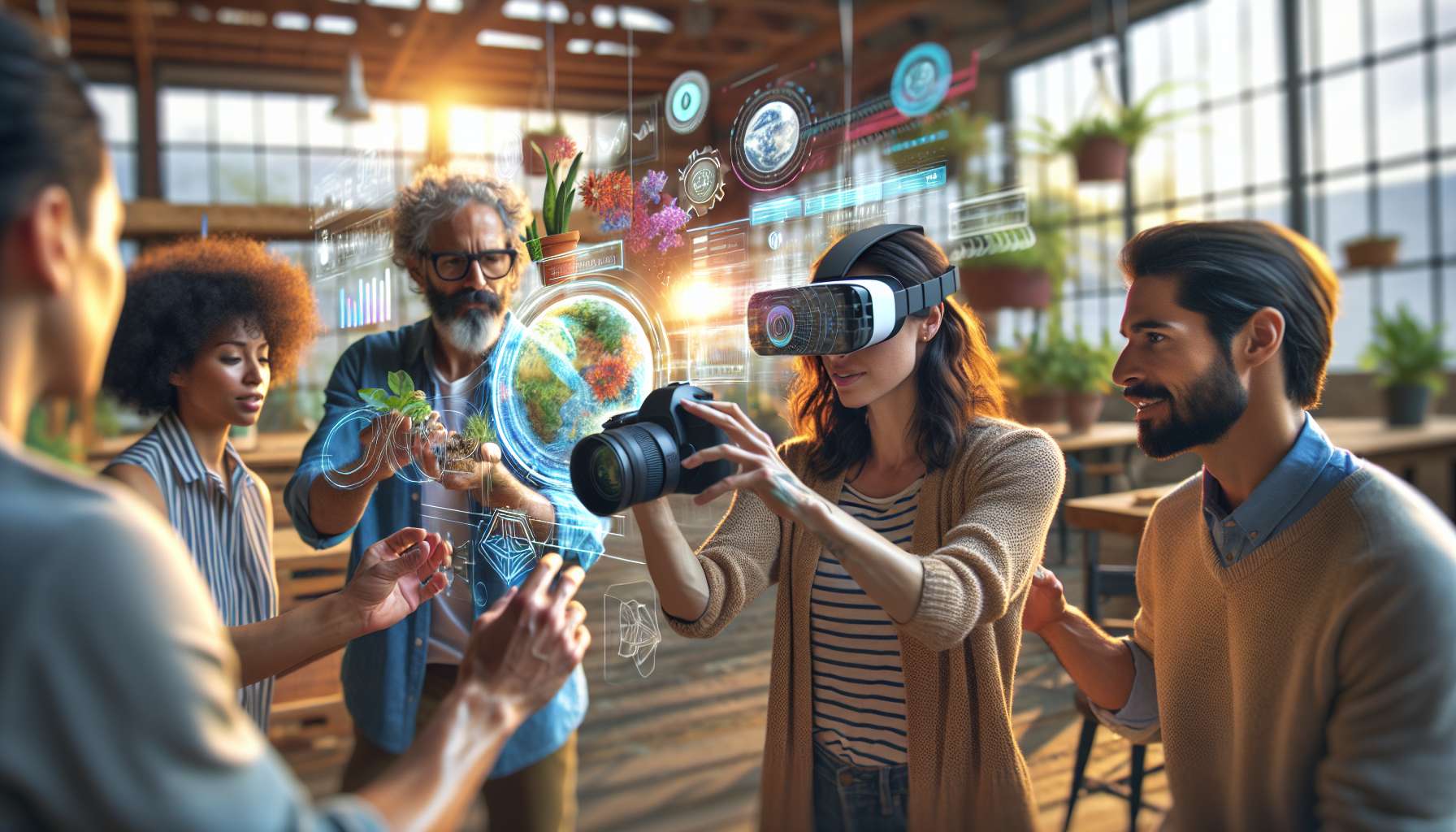The Power of Augmented Reality in Driving Sustainable Business Practices
As the world becomes increasingly aware of the urgent need for sustainable business practices, companies are turning to innovative technologies to help them achieve their environmental goals. One such technology that is revolutionizing the way businesses operate is augmented reality (AR). By blending the digital and physical worlds, AR is paving the way for eco-friendly business innovations that not only benefit the planet but also drive business performance.
1. Enhancing Energy Efficiency
AR can play a significant role in improving energy efficiency within businesses. By overlaying digital information onto the physical environment, AR can provide real-time insights into energy consumption, allowing companies to identify areas of waste and implement targeted solutions. For example, AR can be used to visualize energy usage in a manufacturing facility, highlighting areas where energy is being wasted and suggesting optimization strategies. By optimizing energy consumption, businesses can reduce their carbon footprint and save on energy costs.
2. Streamlining Supply Chain Management
AR can also revolutionize supply chain management, making it more sustainable and efficient. By using AR-powered smart glasses or mobile devices, workers can access real-time information about inventory levels, product locations, and transportation routes. This real-time visibility enables businesses to optimize their supply chain, reducing unnecessary transportation and minimizing waste. For instance, AR can help warehouse workers locate products more quickly, reducing the time and energy spent searching for items and improving overall operational efficiency.
3. Virtual Collaboration and Remote Assistance
AR technology enables virtual collaboration and remote assistance, reducing the need for travel and physical presence. With AR, teams can collaborate on projects from different locations, reducing carbon emissions associated with business travel. Additionally, AR can facilitate remote assistance, allowing experts to guide on-site workers through complex tasks without physically being present. This not only saves time and resources but also reduces the environmental impact of travel.
4. Sustainable Product Design and Marketing
AR can be a game-changer in sustainable product design and marketing. By using AR, businesses can create virtual prototypes and simulations, allowing them to test and refine product designs without the need for physical prototypes. This not only saves resources but also reduces waste. Furthermore, AR can enhance product marketing by enabling customers to visualize products in their own environment before making a purchase. This reduces the likelihood of product returns and promotes more sustainable consumption patterns.
5. Educating and Engaging Consumers
AR can be a powerful tool for educating and engaging consumers in sustainability initiatives. By using AR-enabled apps, businesses can provide consumers with interactive experiences that raise awareness about environmental issues and encourage sustainable behaviors. For example, AR can be used to create virtual tours of eco-friendly manufacturing facilities or to showcase the environmental impact of different product choices. By educating and engaging consumers, businesses can foster a sense of environmental responsibility and loyalty among their customer base.
As the world continues to grapple with environmental challenges, the role of AR in driving sustainable business practices cannot be overstated. From enhancing energy efficiency to streamlining supply chains, AR offers a wide range of opportunities for businesses to reduce their environmental footprint while improving their bottom line. By embracing AR technology, companies can pioneer eco-friendly innovations that not only benefit the planet but also position them as leaders in their industries. The time to harness the power of AR for sustainability is now.





